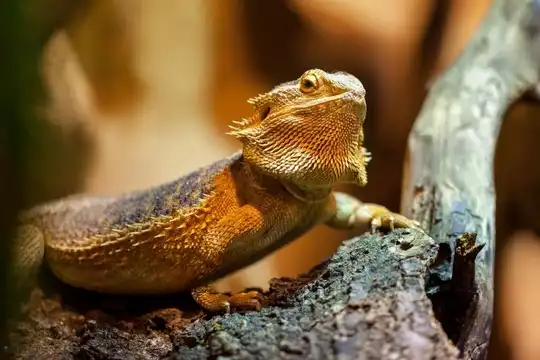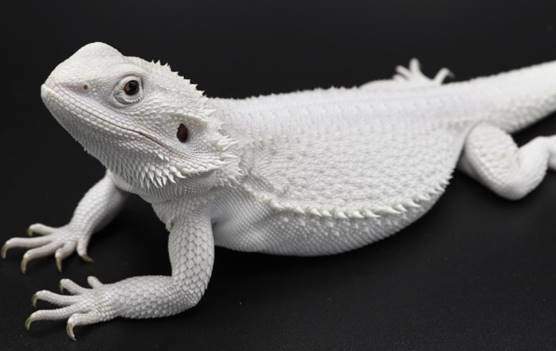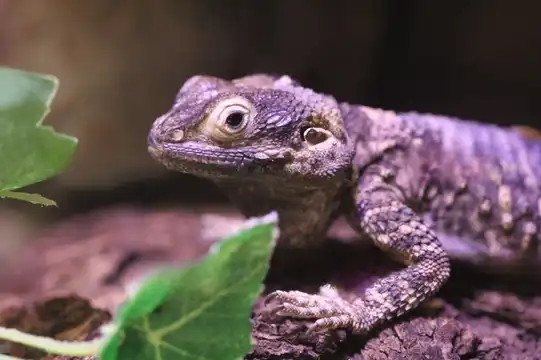Bearded dragons are fascinating reptiles that come in a variety of colors, ranging from bright oranges and yellows to dull browns and grays.
However, some colors are rarer than others, and they can be challenging to find.
According to our research, blue, purple, and black are some of the rarest colors for bearded dragons. The rarity of a particular color may also depend on the specific species or morph of the bearded dragon.
Out of the commonly recognized bearded dragon colors, blue is considered the rarest. While black-bearded dragons do exist, they have not considered a separate color morph and are more accurately classified as melanistic or dark-phase individuals within other color morphs.
While many people enjoy the common colors of bearded dragons, some enthusiasts seek out the rarest types of colors to add to their collections.
In this article, we will discuss the rarest type of bearded dragon color and provide you with essential information about it.

Types of Bearded Dragon Colors:
Before we dive into the rarest type of bearded dragon color, let’s explore the different types of colors that bearded dragons can have.
- Normal or Wild Type: This is the most common type of bearded dragon color, typically featuring shades of brown or grey with hints of orange and yellow.
- Hypomelanistic: This type of bearded dragon has less melanin, resulting in lighter coloration. The colors can range from light yellow to almost white.
- Translucent: These bearded dragons have translucent scales, which means that light can pass through them. This gives them a unique, almost ethereal appearance.
- Leatherback: This type of bearded dragon has a reduced scale count and smoother skin, giving them a leathery appearance.
- Silkback: Silkbacks have even fewer scales than leatherbacks, resulting in a smooth and almost shiny appearance.
- Dunner: This type of bearded dragon has a unique pattern of stripes and dots, giving them a distinct appearance.
- Zero: Zero bearded dragons have no yellow coloration, giving them a unique white or grey appearance.
The Rarest Type of Bearded Dragon Color:
Out of all the types of bearded dragon colors, the rarest type of bearded dragon color is the Paradox bearded dragon. These unique creatures have a combination of two or more colors that should not appear together, creating a striking and rare appearance.
Paradox bearded dragons are the result of genetic mutations that occur during the embryonic development stage. These mutations can cause a combination of colors that would not normally appear together, resulting in unique and rare bearded dragon colors.
Paradox bearded dragons can have a wide variety of color combinations, including blue and orange, black and white, and even purple and green. Some paradox bearded dragons have patterns that resemble the colors of the American flag, while others have striking patterns of black and white stripes.
FAQs:
Q: How rare are paradox bearded dragons?
Paradox bearded dragons are incredibly rare, with only a small percentage of bearded dragons exhibiting this unique coloration.
Q: Are paradox bearded dragons more expensive than other bearded dragons?
Yes, paradox bearded dragons are more expensive than other types of bearded dragons due to their rarity and unique appearance.
Q: Are paradox bearded dragons more difficult to care for than other bearded dragons?
No, paradox bearded dragons require the same care as other bearded dragons, including a proper diet, lighting, and temperature control.

Zero bearded dragon morph (Snow white bearded dragon)
“Zero” is a term used in the breeding of bearded dragons to describe a specific morph or genetic trait. A “zero” bearded dragon has reduced or no markings on its body, giving it a solid color appearance. Zero bearded dragon morphs are considered super rare.
This means that both parent dragons must carry the same gene mutation in order to produce offspring with the zero morph trait.
Because of this, it is much less likely for two dragons with the zero mutation to breed and produce offspring with the zero trait, as opposed to more common traits that are dominant or have a higher chance of being expressed.

Purple Bearded Dragons
The third rarest type of bearded dragon color is the purple bearded dragon. These dragons have a stunning lavender or purple coloration that is the result of a genetic mutation. Their scales are usually shiny and iridescent, and their eyes are a bright red or orange color that contrasts beautifully with their purple scales.
Purple bearded dragons are rare and highly prized by enthusiasts and breeders alike due to their unique coloration. However, because the genetic mutation that produces the purple coloration is recessive, it can be challenging to breed these dragons. As a result, purple bearded dragons are among the most expensive of all bearded dragon morphs.